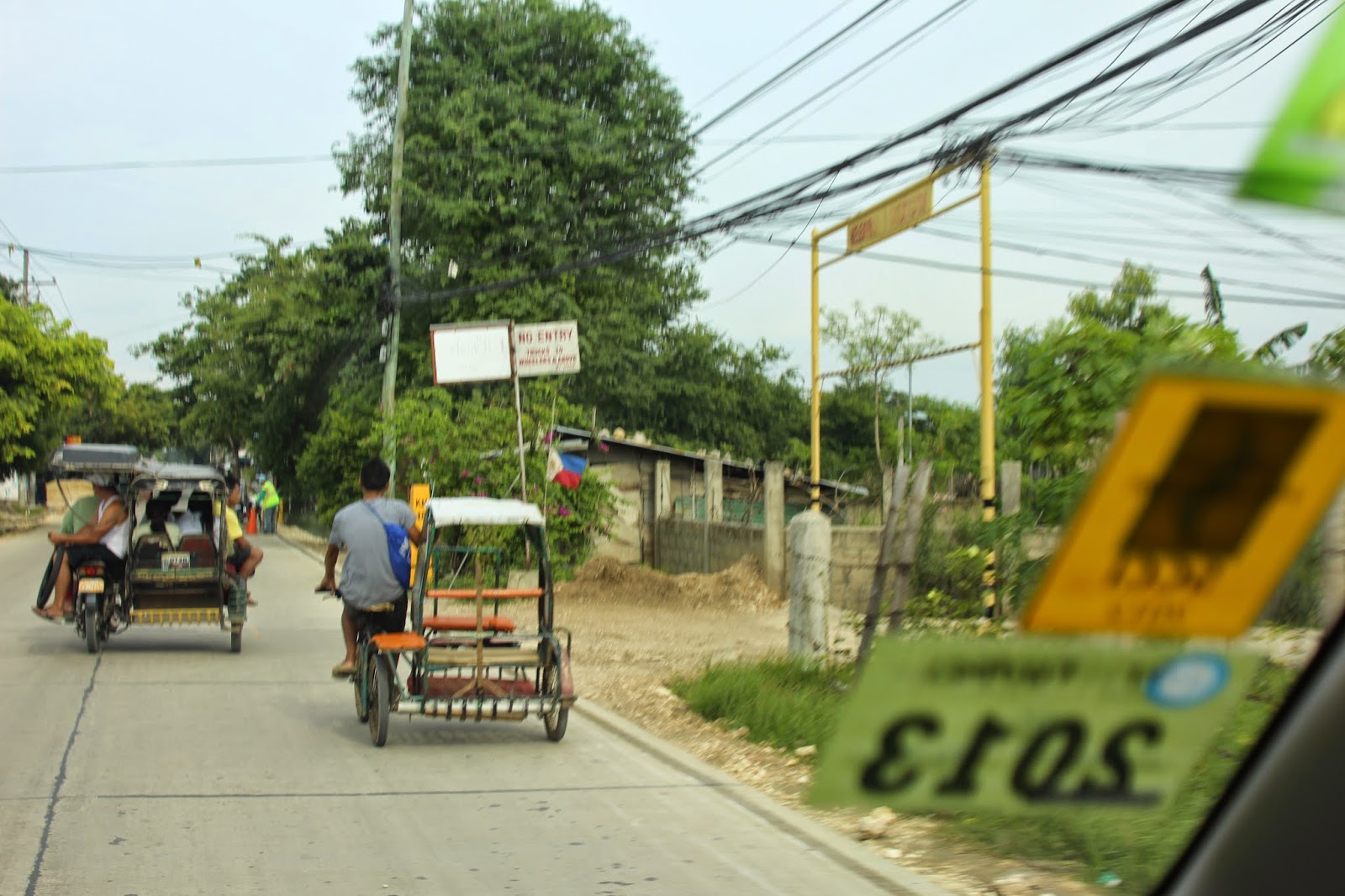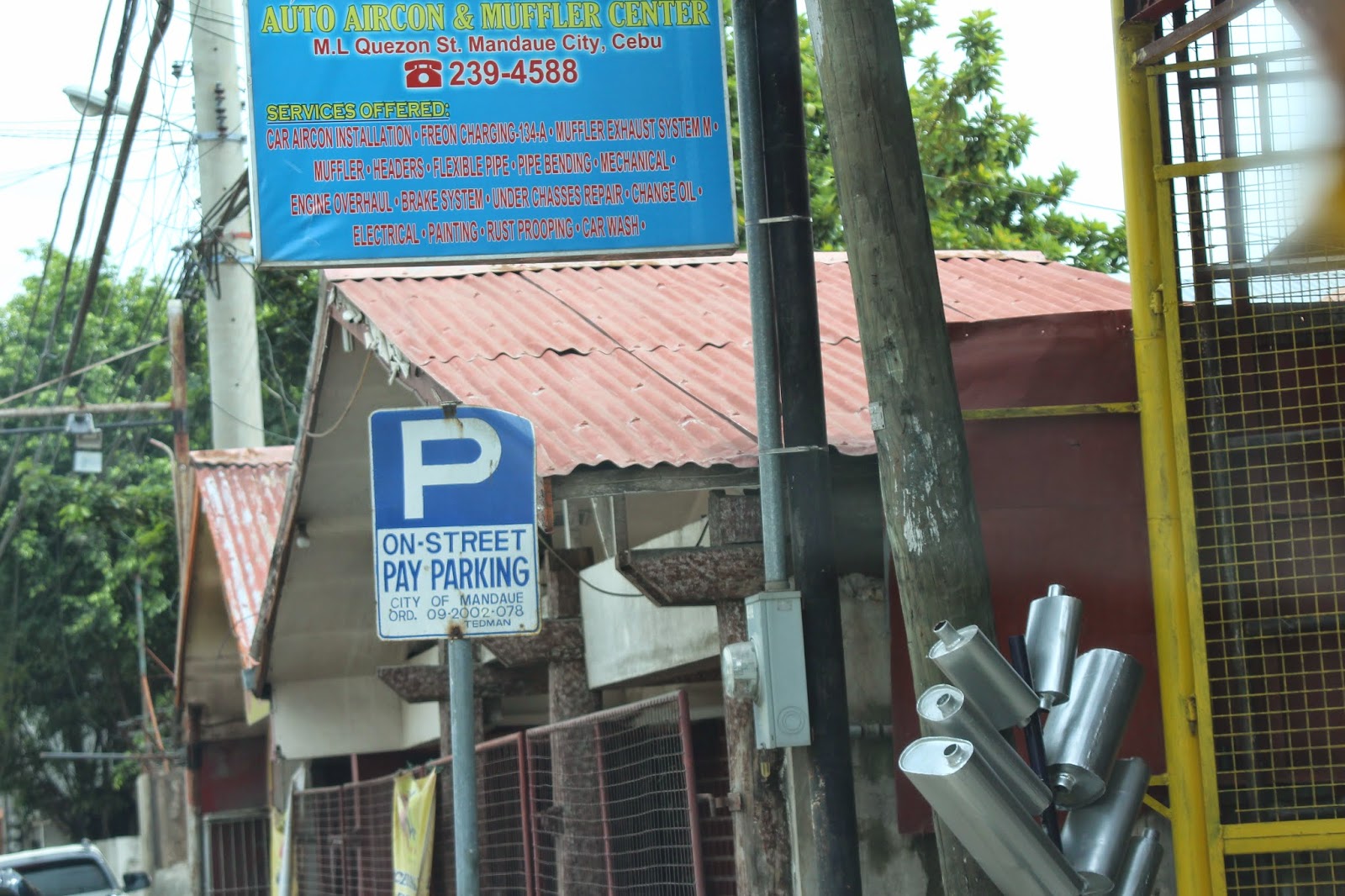 |
| E/S Sorenson from Manti |
 |
| How missionaries in Cebu (on the left) and missionaries from Manila (on the right) dress! In their defence, they were in their apartment not on shift yet. |
Cebu:
We left for the airport at 3 a.m. It was of course raining to beat the band! When we were ready to board the plane, we were instructed to walk through a door, and it was a flash from the past. We were on the tarmac! Interesting, they handed us each a large umbrella as we left the building. The flight was uneventful and quite pleasant. Cebu was overcast when we landed.
 |
| Love this sign! |
 |
| They love their uniforms in the Philippines!
Cebu traffic is much like Manila, except they have really modern Jeepneys:
First stop: Lapu Lapu
Lapu-Lapu, officially the City of Lapu-Lapu (Cebuano: Dakbayan sa Lapu-Lapu, Filipino: Lungsod ng Lapu-Lapu) and formerly called Opon, is a first class[1] highly urbanized city in the Philippines. It is geographically located in the province of Cebu, but administered independently from the province. It is part of the Cebu Metropolitan Area. According to the 2010 census, it has a population of 350,467 people.[3]
The city occupies most of Mactan Island, a few kilometers off the main island of Cebu and also covers the Olango Island Group further to the southeast, plus a few other islets. The city is linked to Mandaue City on mainland Cebu by the Mactan-Mandaue Bridge and Marcelo Fernan Bridge. Mactan-Cebu International Airport, the second busiest airport in the Philippines, is located in Lapu-Lapu City.
In the 16th century Mactan Island was colonized by Spain. Augustinian friars founded the town of Opon in 1730 and became a city in 1961. It was renamed after Datu Lapu-Lapu, the island's chieftain who defeated Portuguese explorer Ferdinand Magellan in 1521 in the Battle of Mactan, commemorated at the Lapu-Lapu shrine in Barangay Mactan.
|
 |
| Laneys, Kresges, Us, Wongs, Dials, Gosses |
 |
| Sure did want to meet some of these sisters! |
 |
| Whenever communities have a festival, they put these flags across their main street. |
Second Stop:
Cebu is known as home of the best guitar craftsmen in the Philippines. Not only are the guitars delicately crafted, they are exceptionally durable, affordable, and of great quality.
One of the remarkable guitar-makers in Cebu is the Alegre Guitar Factory. The shop is owned and managed by Fernando M. Alegre. It is by far the most impressive-looking guitar factory in Abuno, Lapu-Lapu City. Its world-class guitars never cease to impress seasoned guitarists and musicians.
The Alegre family is one of the pioneers in the guitar-manufacturing business, which is on its third generation of proprietorship. Alegre’s quality guitars are made of indigenous materials, from the type of wood used to the shell ornaments, which make one unique instrument.
The shop exports their guitars to countries like Canada, Australia, Japan, and the United States. Visitors and prospective buyers, who are interested in the different stages of guitar-making, can take a look at the workshop to witness the craftsmen do the actual guitar-making process.
 |
| We purchased two ukuleles. |
These next photos are of life in this area of the Philippines. It is pretty much the same everywhere. People, traffic, people, more traffic, storefronts against the edge of the road with living quarters either behind or on top of it.
 |
| Notice the pig on the spit! |
This business sells clothing.
 |
| Up and over the water to our next destination. |
Last stop: Profoods where they process mangoes and other tropical fruits.
 |
| I really wanted to buy this bench for our patio in Manti, but Edward said, "The picture is all you get!" |
 |
| Our tour guide. They wouldn't allow us to take pictures inside the plant, but it is unreal the process to package the mangoes we buy in Costco! Check out this website; Mango Processing Plant click on the top left corner "Learn about the Gallery" for a tour. |
 |
| Eating the "forbidden" fruit?!?! |
A miniature display of the Profoods Plant
As we left, we couldn't help sneaking these pictures. Y'all know how I love their signs, well, these are everywhere in this huge complex.
We thought it was pretty funny to have to warn people about a trap!
On the way to the hotel, we saw a variety of things for sale!
 |
| Headstones |
 |
| Glasses |
 |
| Wish I would have bought some of these! |
 |
| Don't know what he is crowing about
We checked into the Quest Hotel
|
 |
| No wonder no one obeys traffic signs! |
 |
| Hmm....wonder what a Fixer is????? |
 |
| I find the wires very interesting. With the many typhoons, no wonder power is interrupted for weeks at a time. |
 |
| We see many things carried on heads. |
Our next stop was Fort San Pedro.
A WALK TO REMEMBER AT FORT SAN PEDRO
If you want a quiet walk into Cebu’s profound history, head on to a landmark offering historical chronicles of several countries such as Spain, America, Japan, and the native Philippines, all tied to a heavy stone wall.
Welcome to Fort San Pedro!
Fort San Pedro is a captivating historical sight to visit in Cebu. It is the oldest and smallest fort in the Philippines.
In 1565, the fort was built using logs, mud, stones, and mortar by Spanish conquistador Miguel Lopez de Legazpi and his men to serve as hub of the first Spanish settlement in the Philippines.
It was named after Legazpi’s ship “San Pedro” which sailed the Pacific Ocean in 1565.
It was nigh on unfamiliar until around 1738 when its construction was finally finished as a bastion against hostile natives and Muslim raiders. An official report about the construction of the fort was also mentioned to King Phillip II of Spain in 1739. It mentioned what was inside the fort such as the “Cuerpor de Guardia,” the large building which accommodated personnel that manned the fort and a “Vivende del Teniente,” which was the sleeping quarter of the fort lieutenant. What was also indicated in the report was the well and a powder magazine.
The fort, Fuerza San Pedro, is triangular in shape and houses three bastions. It has a total area of 2, 025 square meters with walls that are as high as 20 feet and eight feet thick and towers that rise 30 feet from the ground. Its riveting records show its different purposes for several years. It became a watch tower to counter attacks, a refuge for Filipino revolutionaries, a US army barracks, and as hideout for Japanese revolutionaries. It also became a place of education for the Cebuanos, and it also served as office for the Department of Tourism and Philippine Tourism Authority.
By 1950, the Garden Cebu Club took over and transformed the fort into a beautiful garden. It was open to garden weddings, family picnics, and site for model photography. In 1957, the fort was used as a zoo. In 1960, the fort was renovated to uphold the original design coral stones. Today, its remainder still holds significance for it has become a museum-park providing visitors with a glimpse of history. It has a lush garden with tropical foliage that will enthral you. There are also old ruins and Spanish artifacts.
Its museum holds antiques, remnants, and Spanish items like paintings, old coins, documents, sculptures, sword fragments, and other valuables. Fort San Pedro is in the area of Plaza Independencia and Central Post office near Pier 1. It is located at Barangay San Roque, Legaspi corner Osmeńa Street.
 |
| Hmm....Life? |
 |
| Our "tour guide in training" did an excellent job. |
 |
| Blind musicians |
 |
| Lapulapu, King of Mactan who killed the explorer, Ferdinand Magellan, who made the Philippines part of world history. |
 |
| Magellan |
 |
| HaHa! |
 |
| This tower and others were destroyed in the earthquake last year. |
Magellan's Cross was our last stop of the day:
Magellan's Cross is a Christian cross planted by Portuguese, and Spanishexplorers as ordered by Ferdinand Magellan upon arriving in Cebu in thePhilippines on (depending on source) March 15 , 1521.[1][2]
This cross is housed in a chapel next to the Basilica Minore del Santo Niñoon Magallanes Street (Magallanes being the Spanish name of Magellan), just in front of the city center of Cebu City. A sign below the cross describes the original cross is encased inside the wooden cross that is found in the center of the chapel. This is to protect the original cross from people who chipped away parts of the cross for souvenir purposes or in the belief that the cross possesses miraculous powers.[3] Some people, however, believe that the original cross had been destroyed or had disappeared after Magellan's death, and the cross is a replica that was planted there by the Spaniards after they successfully colonized the Philippines.[1][2][4]
I am going to try some pictures from Wikipedia. If they don't work, just go to the Magellan's Cross website to see them. They are before the earthquake and ours are what it looks like today. These are much better than ours!
 |
| Pointing to the "wavy tiles" on the roof. |
 |
| Caused by the earthquake. |
Back to the hotel and bed since we had been up at 2 that morning.
Tuesday in Cebu:
We were able to attend the Cebu Temple
Remember the pictures of the Sorensons!
 |
| Chicken (we wondered if it was fish) Caesar Salad |
 |
| Mango shakes - yum yum! |
 |
| Elder Dial's hamburger - couldn't get his mouth on it! |
We went to bed early as we had to leave for the Bohol ferry at 4 a.m.
This concludes our first two days in Cebu. We had a wonderful time. Parting thought:
"An invitation that is born of our love for others and for the Lord Jesus Christ and our desire for the happiness of these friends and family members will never be seen as offensive or judgmental."
—Jeffrey R. Holland, "Our Responsibility to Invite”






































































































No comments:
Post a Comment